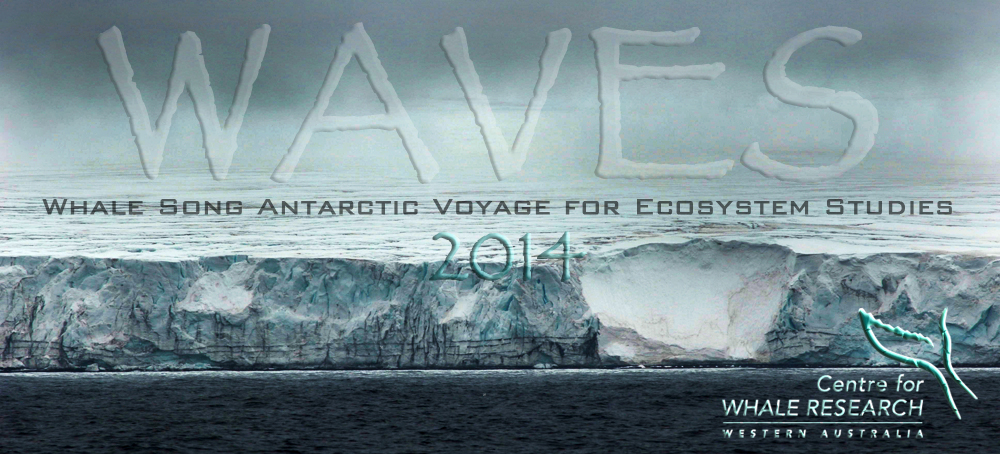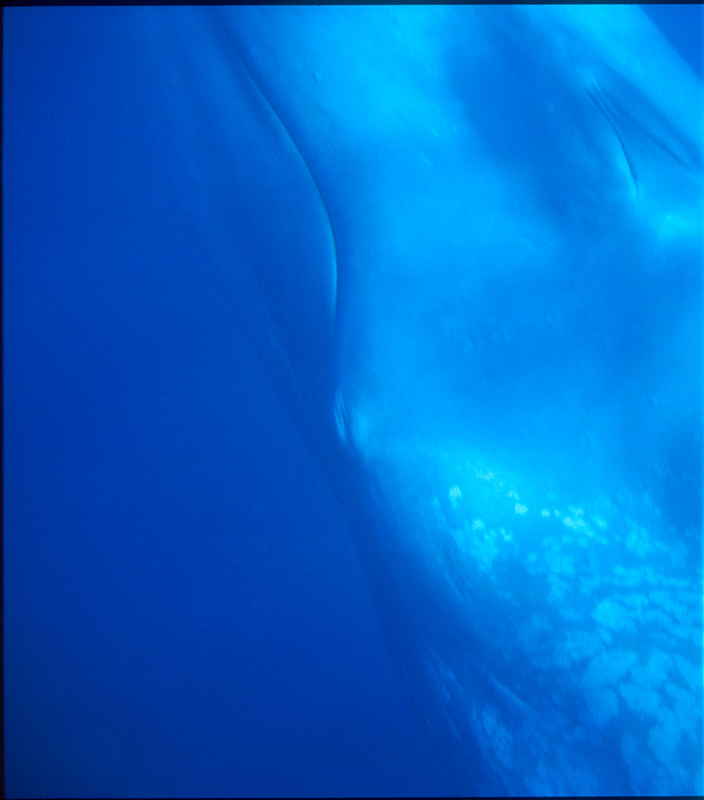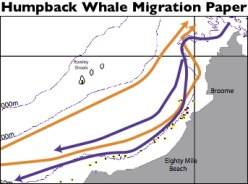Day 3 Port Welshpool enveloped in morning fog… (Written on Feb 18, 2013)
At 0205 am Curt, Dale, Resty and Sam anchor Whale Song off the long jetty wall in Port Welshpool, Victoria. We are here to rendez-vous with our colleague Dr. Pete Gill from the Blue Whale Study based in Portland Victoria, whom has been researching the pygmy blue whales along the south coast for the last 14 years. As we rise at 0630, the vista from our window is intriguing. Why can’t I see? It’s all white, ahhh, we are in fog. Whale Song is surrounded by a pea-soup fog! Being from WA, we don’t see fog very often, so sepia-toned photos of the sun trying to peep through the wet mist must be collected!…
Orca, our 6m tender, is launched by the crew and Curt and Sam roar ashore through the fog. Back in a flash to the tune of Skipper barking excitedly, Pete arrives on board to join our good ship Whale Song for the next five days between Port Welshpool and Robe surveying for blue whales and any other cetaceans.
By 0745 the anchor is raised and as we slowly move south-west, the fog magically lifts at 0819 and we are treated to grand vistas of Wilson’s Promontory. This area is stunning, especially for sand-gropers! Huge, granite mountains rise from the blue sea, some covered in dark green vegetation, others the weathering rock is exposed with all manner of steel-grey, cream and blue-grey hues. South East Point has an ocean-side rocky knoll with a lighthouse and associated lighthouse keeper homes that are straight out of a story book. White buildings atop the granite knoll against the higher mountains behind are spectacular.
In the mid-morning, Curt, Pete, Maria and I discuss our plans for the next five days, whereby we’ll visually survey for top predators (cetaceans, pinnipeds and sea birds) from dawn until dusk, and match this effort with continuous acoustic recordings. This will be a very interesting next few days in amongst a very productive area with many species of cetaceans potentially present.
Lunch is fried rice with celery, sweet peas, leek eggs and chillie with orange and poppy-seed cake for afters. Proceeding westward, at 259 degrees past Wattle island and the lumpy granite islands of the Anser Group and Skull Rock. A photo-opportunity unfolds as we see the NW side of Skull Rock and that is apparently almost entirely hollow and grassy on the “cave” bottom with birds, possibly shearwaters and Pacific gulls nesting. In the photographs the base of the open island is a light, bright green and the grass appears very thick and lush. It is nice to have some local knowledge of the local scenery. We are still in Bass Strait, heading 258 degrees towards a way-point offshore near King Island where we will begin a saw-tooth transect survey from the 200m contour line in towards the coastline.
New birds we have recorded today in our ten minute each hour bird surveys include a Crested Tern and a Pacific Gull, the first with a characteristic yellow beak and the second with a large orange beak with a bright red blob at the tip. Three pods of common dolphins, of about 260 animals find us today and bow-ride delightfully, one pod of near 200, others 50 and a pod of 10. The dorsal fins have varying amounts of white marking and it is interesting to see the different hierarchy of those animals having access to the bow. Yesterday, during one of the encounters, three calves of the common dolphins were with their mothers but aggressive movements were made by adult males to limit their access to the bow wave.
By 1600, under a warm sun of a gorgeous summer day, we are heading west remember, away from Sydney (!) where it does rain quite a lot, the acoustics team detects blue whale calls at 20 Hz with harmonics at 70 Hz. Also sei whale sounds between 30-100 Hz complete the barn-yard chorus. We scan and scan from the fly-bridge, getting thinner by the minute and looking and looking, hoping beyond words that we will find all the singers. Indeed, in the past, we have found humpback whales and sperm whales using the tracking techniques of acoustic bearing determination, but animals in the low frequency gang seem to be a tad harder to locate since the sound can travel over such vast distances. But it is not for lack of trying on everyone’s part. We will fine tune this and we SHALL find them! At 1915, we finally decide to return to our track-line and eat the dinner which Resty has had ready for over an hour. Noodles with chicken and salami, steamed rice, baked potatoes and sweet potatoes and coleslaw tame the raging tiger in my tank. Next I am able to complete my daily piece which must be done during the time window between dinner and 9pm which is when I need to get to bed before my 12-3 watch… this is the world I love… some order within great randomness.
By day-break, we will be in amongst whales Pete assures us, I can hardly wait! A surprising sighting of a mola-mola (sun-fish) with its’ huge dorsal fin visible above the surface has us thinking about the incredible strength of the Leeuwin current bringing warm waters animals eastwards.
From the bright, blue waters 70 nm SSW of Melbourne!
Mich

















No comments yet.